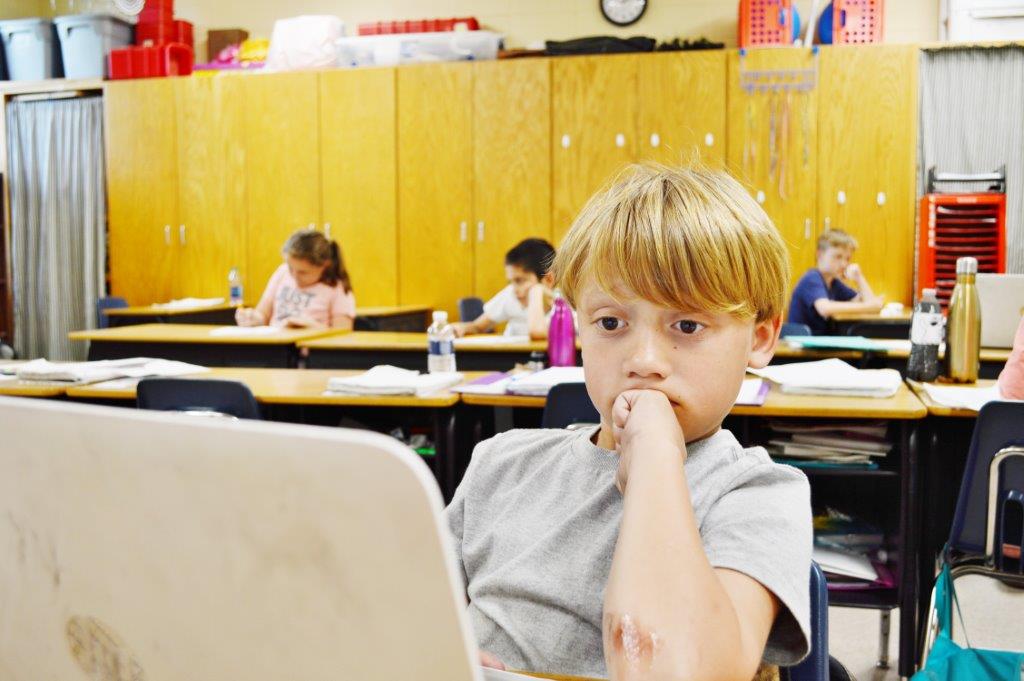PROFESSIONAL COMPETENCIES
Designing for learning
WHY IS THIS CRITICAL?
Designing for learning creates the foundation and scaffold for each learner to achieve high standards. Expanded expectations for learners to graduate prepared for college, career, and community engagement drive educational design. Designing for learning builds upon the educator's depth of knowledge in content, learning strategies, and expertise in making and designing lessons, using data, and examining student work. Engaging learners in personalized, rigorous and relevant learning enables them to develop an academic mindset and a learning disposition. Excellent design of instruction results in student work that is authentic and meaningful.
HOW MIGHT EDUCATORS BEGIN TO REDESIGN INSTRUCTION TO BETTER ALIGN WITH THE NEEDS OF ALL STUDENTS?

Self-reflection Guide
-
FOUNDATIONAL
Individuals HRSC become aware of the need to build curricula using clear, essential academic standards integrated with learning competencies (such as critical thinking, problem solving, etc.) and begin the process of creating curricula to be used to make learning visible to all learners. Individuals HRSC explore pedagogy (instructional strategies and routines) for designing learning experiences that demonstrate how to develop learning competencies integrated with essential academic standards, in ways that meet the needs of different learners in a student-focused environment. Individuals HRSC start evaluating their current instructional curriculum for what is meaningful and relevant for students. Individuals seek and prioritize professional development that helps them build their pedagogical skills (strategies, routines, etc.) to facilitate collaborative student-focused learning.
-
DEVELOPING
In teams, HRSC educators build and refine curricula using clear, essential academic standards integrated with learning competencies (such as critical thinking, problem solving, etc.) and improve the process of creating curricula to be used to make learning visible to all learners. In teams, educators HRSC reflect on and improve pedagogy (instructional strategies and routines) for designing learning experiences that demonstrate how to develop learning competencies integrated with essential academic standards, in ways that meet the needs of different learners in a student-focused environment. HRSC Current instructional curriculum is co-designed in teacher teams, and increasingly with students and the community, to offer learning experiences that are meaningful and relevant for students. Educators seek and prioritize professional development that helps them improve their pedagogical skills (strategies, routines, etc.) to facilitate collaborative student-focused learning.
-
SUSTAINING
Constant examination of clear, essential academic standards integrated with learning competencies guides the school community in designing curricula. All students have constant access to visible content progressions and learning competencies which provide pathways for competency-based learning. An ever- evolving use of research-based pedagogy supports development of intellectual, social and emotional needs in a learner-focused environment. Designing for learning emphasizes real-world concepts and application, including experiential learning, problem solving, research, technological literacy, and current national and international issues. All learners use their awareness of cognitive, metacognitive, and social and emotional skills to guide their individual learning . Using research gathered from several sources such as learning journeys, research, in-depth analysis of student work, and professional consultants, the learning community continues to co-generate and refine learning with the student at the center. Focus has shifted from content driven practices to learning how to learn as students, community, and educators collaborate to create meaningful learning. Professional development is personalized, purposeful, and a routine part of the school’s commitment to continuous improvement.
What might I consider?
- How might teachers build on current design practices?
- What might be some important learning competencies for your community?
- What practices align with all learners designing their own authentic, meaningful experiences with community impact?
Where might I start?
Where might I start? Engage your team in a self-reflection on the critical attribute: Designing for learning .
Explore Designing for learning PROFESSIONAL COMPETENCIESUsed with permission. From Handbook for High Reliability Schools™: The Next Step in School Reform by Robert J. Marzano, Philip B. Warrick, and Julia A. Simms. Copyright 2014 by Marzano Research, 555 North Morton Street, Bloomington, IN 47404, 800.733.6786, www.marzanoresearch.com
